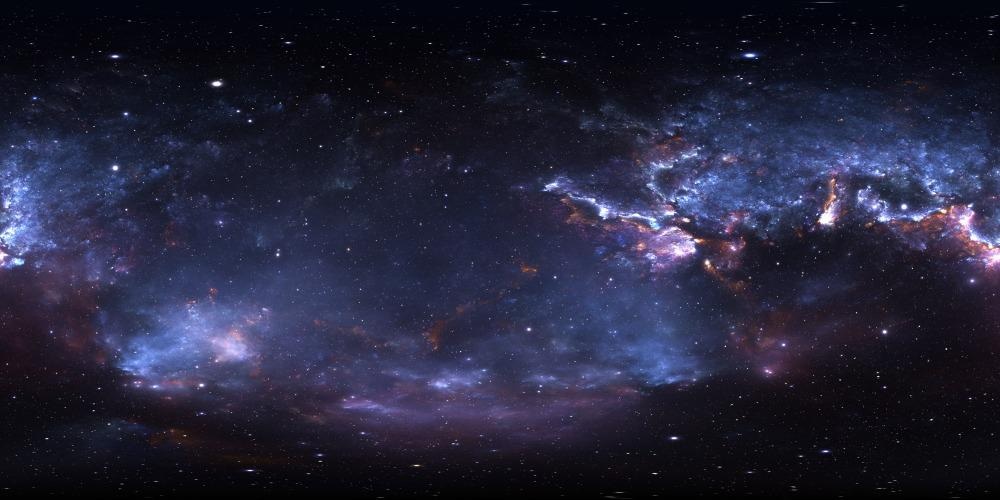The XENON1T experiment, designed to detect dark matter, may have detected dark energy instead. This could have interesting implications for attempts to characterize our universe.

Image Credit: Jurik Peter/Shutterstock.com
We do not know what the vast majority of the Universe is. The stars, planets, dust, gas, and objects we see in the vastness of space and around us on an everyday basis are made of a form of matter that only accounts for five percent of the Universe’s total matter and energy content.
The rest is a mystery: the so-called “dark universe” made up of dark matter, whose gravitational influence holds together the galaxies, and dark energy a force that is accelerating the expansion of the universe, driving these galaxies away from each other.
While dark matter accounts for around 27 percent of the universe’s energy and matter, dark energy accounts for as much as 68 percent.
Aside from the prefix “dark” and the fact they almost find themselves at opposite ends of a cosmic tug of war, dark matter and dark energy are not really connected.
Yet, an experiment designed to detect dark matter may have accidentally caught a trace of dark energy.
New research published in the journal Physical Review suggests that unexplained results delivered by the XENON1T experiment, a 500kg liquid xenon detector designed to detect potential dark matter candidate particles, may have been caused by dark energy.
A University of Cambridge team devised a model that suggests XENON1T may have actually detected dark energy particles located in the vicinity of the Sun in a region with particularly strong magnetic fields.
While the researchers acknowledge that future investigation will be vital in verifying their model, these results could provide an important step forward in unraveling the mystery of dark energy.
Why Does Dark Energy Keep Shocking the Scientific Community?
The expansion of the Universe certainly came as a shock to Albert Einstein when Edwin Hubble revealed it to him. The physicist had actually predicted this expansion, but dismissed it as an error.
When Einstein first devised his theory of general relativity in 1915, he found that the equations that governed it predicted that the Universe was non-static.
This did not sit well with Einstein, who introduced a term called the cosmological constant to offset this and ensure the Universe remained still, as the prevailing theories at the time suggested it should.
When Einstein was convinced of the expansion of the universe, the cosmological constant was removed. It would be reinserted into equations describing the Universe in the 1990s when observations of distant supernovas revealed that not only is the Universe expanding, but it is also doing so at an accelerating rate.
This modern cosmological constant now represents that action of dark energy, driving galaxies apart more and more rapidly. What the cause of this expansion actually is, and thus the true nature of dark energy, remains unsolved, though many scientists believe that dark energy could be the result of an as of yet undiscovered fifth force of nature.
Yet, because the theory of general relativity describes the Universe and the effects of gravity very well, at least on a local scale, if there is a fifth force it must be well hidden on localized scales.
This “screening” only fails on the largest scales where we can see the accelerating expansion of the Universe.
The key to solving this mystery and discovering this “screening mechanism” may lie in an excess of signals detected by Xenon1T in 2020.
Has Xenon1T Discovered the Mechanism That Has Been Hiding a Fifth Force of Nature?
This signal excess was initially attributed to axions, hypothetical light particles that could be dark matter, produced by the Sun.

Image Credit: Nasky/Shutterstock.com
The issue with that explanation is that if the signal was down to axions created by our star, then our concept of how larger stars evolve is very wrong.
What the University of Cambridge team suggests is that the excess signal was actually dark energy particles coupling with photons in the Sun’s strong magnetic fields, a conclusion they arrived at by creating a model around a screening mechanism called chameleon screening.
The advantage of this screening mechanism is that it stops the production of dark energy particles in very dense objects, avoiding the problems in stellar evolution presented if the excess is axions.
Chameleon screening also separates what happens on the dense scales of the local Universe and what happens in the extremely low density of the Universe at the largest scales.
The researchers then used this model to predict what would happen if dark energy was produced in the tachocline, a region of the Sun where the magnetic fields are particularly strong.
The major takeaway from the team’s findings is that detectors designed to locate dark matter could also be used to probe dark energy.
This relies on whether scientists can convincingly prove the excess signals were not a fluke.
The only way of ruling out such a fluke is by detecting a similar excess again in the future.
If a stronger signal can be found, Xenon1T and similar experiments may soon be shedding light on both dark matter and dark energy.
References and Further Reading
Vagnozzi. S., Visinelli. L., Brax. P., et al, (2021), “Direct detection of dark energy: The XENON1T excess and future prospects,” Physical Review D, journals.aps.org/prd/abstract/10.1103/PhysRevD.104.063023
Aprile. E., Aalbers. J., Agostini. F., et al, (2020), “Excess Electronic Recoil Events in XENON1T,” https://arxiv.org/abs/2006.09721
Disclaimer: The views expressed here are those of the author expressed in their private capacity and do not necessarily represent the views of AZoM.com Limited T/A AZoNetwork the owner and operator of this website. This disclaimer forms part of the Terms and conditions of use of this website.